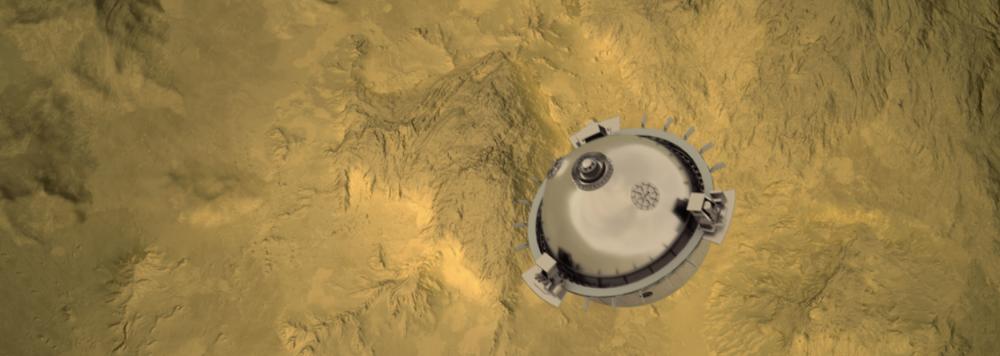More than 460 degrees Celsius, more than 90 times the Earth's atmospheric pressure, the air is all sulfuric acid clouds. It's about the size of Earth, but it's a very different world on Venus. After the multi-national exploration "fire" in 2020, there will be a "gold rush" fever, and Russia, the United States, and India have disclosed their exploration plans, of which Russia plans to dig up soil and come back.
Of the eight planets in the solar system, Venus is the second planet outward from the Sun and the closest planet to Earth. Although Venus and Earth are similar in size and position, the two planets are in a completely different direction, and Venus is extremely uninhabitable.
Unlike the thin and cold atmosphere of Mars, the temperature on Venus is high, the surface temperature can be as high as about 464 ° C, enough to melt lead, the charred land is covered by sulfuric acid clouds, the atmosphere is thick, but composed mainly of carbon dioxide, and the atmospheric pressure is more than 90 times that of Earth, which makes the air near the surface more like a fluid than a gas. But scientists believe that Venus may have been more earth-like long ago, and hypothesized that something caused an "out-of-control greenhouse effect" in Venus' atmosphere, causing temperatures to rise and the oceans to evaporate.
Since the 1960s, the Soviet Union's "Venus" series, the United States's "Pioneer Venus" series and other probes have visited Venus. In recent years, Europe, Japan and other countries have successively launched Venus orbiters. To date, more than 40 probes have been sent to Venus or flyby to Venus.
Russia's latest plan is to explore Venus three times and try to dig up the earth for the last time. According to the Russian Satellite News Agency reported on January 26, Lev Zelyonne, director of the Institute of Astronautics of the Russian Academy of Sciences, said that Russian scientists are ready to make three explorations of Venus between 2029 and 2034, and the last one will try to transport it back to the soil from there, which is the first time in history that such an attempt has been made.
According to Zelyonne's presentation, Russia plans three Venus explorations in 2029, 2031 and 2034. In 2029, Venus-D equipment equipped with orbit, landing, display and atmosphere modules will be dispatched to Venus. The second exploration will take place in 2031. The "Discovery-3" project will be launched in 2034, which will include flight and balloon modules as well as landing and return equipment.
Aside from Russia, the last time NASA studied the surface of Venus was the Magellan probe that ended in 1994. It provides clues about the geology of Venus, but it is impossible to determine the origin of many of the surface features.
After a more than 30-year hiatus, the United States is also "back" to Venus. NASA's VERITAS mission is scheduled to launch in 2026 to explore the past and present geological processes of Venus. The probe will orbit Venus, using a radar system to create a 3D map of the globe through the clouds and learn about the composition of the surface through a near-infrared spectrometer. Measure the gravitational field of Venus to determine the internal structure of Venus.

Leonardo da Vinci Plus will launch a 1-meter-diameter probe to explore the atmosphere under high temperature and pressure on the surface of Venus. During the final free-fall descent ( as shown in the figure ) , the probe will capture images of Venus and chemical measurements.
NASA's DAVINCI+ mission will understand why Venus has a completely different fate than Earth's. Da Vinci Plus consists of spacecraft and probes that track the movement of clouds and map their surface composition by measuring the heat released from Venus' surface; probes will travel through the atmosphere, collect chemical composition, temperature, pressure and wind, and take the first high-resolution images of the ancient highland of Alpha Regio, looking for evidence that past crustal water affected surface material.
NASA said last June that it was aiming to launch in fiscal 2030, flying over Venus twice before the probe landed. Flyby is the initial stage of a remote sensing mission to study atmospheric circulation and map the composition of the earth's surface. About 2 years later, the probe was released to collect atmospheric data during landing.
In addition, India's Venus exploration program is also in the making. India's Venus exploration program Shukrayaan will conduct a 4-year study of Venus, including studying the interaction of the solar wind with the ionosphere of Venus, the structure, composition and dynamics of The Venus atmosphere, etc. The program is expected to launch in 2024, and if the launch window is missed, the next launch will have to wait until 2026.